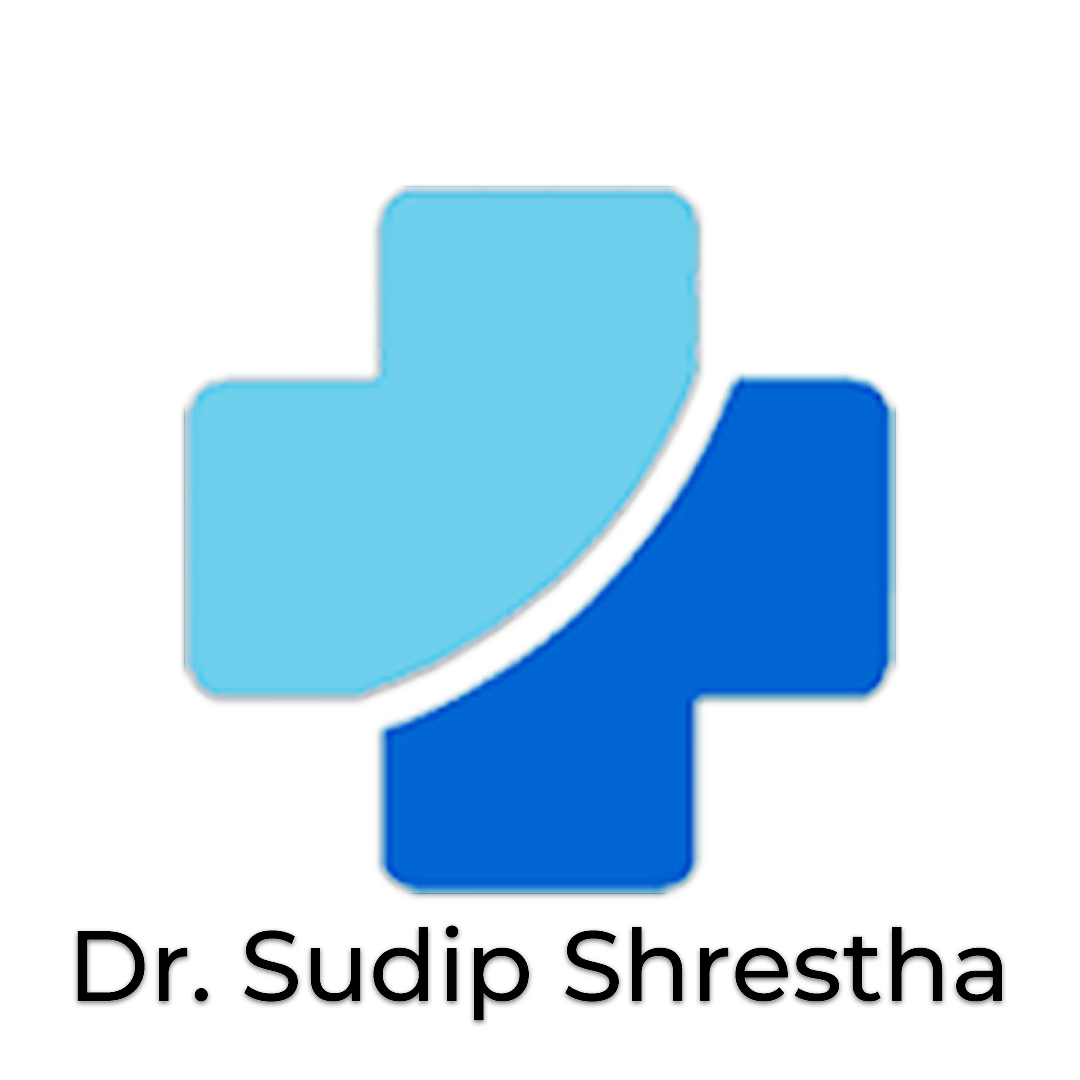I. Introduction
Sun, Oct 1, 2023 – Tue, Oct 31, 2023 is widely recognized as Breast Cancer Awareness Month, a time dedicated to raising awareness about breast cancer, its prevalence, and the importance of early detection and treatment. This annual observance serves as a reminder of the critical need for education, support, and research to combat this widespread disease. In this blog post, we will delve into the significance of Breast Cancer Awareness Month, provide an overview of breast cancer’s prevalence and its far-reaching impact, and elucidate the purpose of this discussion.
A. Importance of Breast Cancer Awareness Month:
Breast Cancer Awareness Month holds immense significance for several compelling reasons:
- Early Detection: Breast cancer is one of the most common cancers affecting women worldwide. Timely detection through screenings like mammograms can significantly improve the chances of successful treatment. This month aims to encourage women to prioritize regular breast health check-ups.
- Support and Solidarity: Breast cancer doesn’t just affect the individuals diagnosed; it touches the lives of their families and communities as well. Breast Cancer Awareness Month fosters a sense of solidarity, reminding everyone affected by this disease that they are not alone.
- Education: It provides a platform to educate the public about the risk factors, warning signs, and prevention strategies associated with breast cancer. Knowledge is a powerful tool in the fight against this disease.
- Fundraising: Many organizations use this month to raise funds for breast cancer research, which has led to significant advancements in treatment options, survival rates, and improved quality of life for those diagnosed.
B. Overview of breast cancer prevalence and impact
Breast Cancer Awareness Month holds immense significance for several compelling reasons:
- Early Detection: Breast cancer is one of the most common cancers affecting women worldwide. Timely detection through screenings like mammograms can significantly improve the chances of successful treatment. This month aims to encourage women to prioritize regular breast health check-ups.
- Support and Solidarity: Breast cancer doesn’t just affect the individuals diagnosed; it touches the lives of their families and communities as well. Breast Cancer Awareness Month fosters a sense of solidarity, reminding everyone affected by this disease that they are not alone.
- Education: It provides a platform to educate the public about the risk factors, warning signs, and prevention strategies associated with breast cancer. Knowledge is a powerful tool in the fight against this disease.
- Fundraising: Many organizations use this month to raise funds for breast cancer research, which has led to significant advancements in treatment options, survival rates, and improved quality of life for those diagnosed.
C. Purpose of the blog post
The purpose of this blog post is threefold:
- To promote awareness of Breast Cancer Awareness Month, emphasizing the importance of early detection and regular screenings.
- To provide valuable information about breast cancer, including risk factors, symptoms, and prevention strategies, empowering readers to take control of their breast health.
- To encourage support for ongoing research and initiatives aimed at improving breast cancer treatment and outcomes.
II. Understanding Breast Cancer:
Breast cancer is a complex and diverse group of diseases that can affect both women and men. It is characterized by the uncontrolled growth of abnormal cells in the breast tissue. To effectively address breast cancer, it is crucial to understand its various types, as treatment approaches can differ significantly based on the specific subtype. Here, we will explore some of the primary types of breast cancer:
A. Types of breast cancer
1. Invasive Ductal Carcinoma (IDC):
- IDC is the most common type of breast cancer, accounting for approximately 70-80% of all cases.
- It begins in the milk ducts of the breast but can invade nearby tissues if left untreated.
- Early detection and treatment are key to successful outcomes for IDC.
2. Invasive Lobular Carcinoma (ILC):
- ILC is less common, representing around 10-15% of breast cancer cases.
- It starts in the milk-producing glands (lobules) and can spread to surrounding tissues.
- ILC can be more challenging to detect through mammography, as it often does not form a distinct mass.
3. Ductal Carcinoma in Situ (DCIS):
- DCIS is a non-invasive form of breast cancer where abnormal cells are confined to the milk ducts and have not spread into surrounding tissue.
- While it is not invasive, DCIS requires treatment to prevent the possibility of it becoming invasive over time.
4. Inflammatory Breast Cancer (IBC):
- IBC is a rare but aggressive form of breast cancer.
- It often presents with redness, swelling, and a warm sensation in the breast, resembling an inflammatory condition.
- IBC requires immediate medical attention and a comprehensive treatment plan.
5. Triple-Negative Breast Cancer:
IBC is a rare but aggressive form of breast cancer.
- It often presents with redness, swelling, and a warm sensation in the breast, resembling an inflammatory condition.
- IBC requires immediate medical attention and a comprehensive treatment plan.
6. HER2-Positive Breast Cancer:
- HER2-positive breast cancer is characterized by an overexpression of the HER2 protein on the surface of cancer cells.
- It can be more aggressive but is often treatable with targeted therapies that inhibit the HER2 protein’s action.
B. Risk factors and prevention strategies:
Several risk factors contribute to the development of breast cancer. These include genetics, family history, age, gender, hormonal factors, and lifestyle choices. While some risk factors are beyond our control, there are preventive measures individuals can take:
- Regular Breast Self-Exams: Perform monthly breast self-exams to become familiar with the normal appearance and feel of your breasts. Any unusual changes should be reported to a healthcare provider.
- Mammograms: Women over the age of 40 should undergo regular mammograms, as recommended by their healthcare providers. Mammography is a powerful tool for early detection.
- Healthy Lifestyle Choices: Adopt a healthy lifestyle by maintaining a balanced diet, engaging in regular physical activity, limiting alcohol intake, and avoiding smoking.
- Know Your Family History: Understand your family’s history of breast cancer and share this information with your healthcare provider to assess your risk.
C. The significance of early detection and screening:
Early detection of breast cancer can significantly impact the prognosis and treatment options. Here’s why early detection and regular screening are crucial:
- Improved Survival Rates: Breast cancer caught in its early stages often has a higher chance of successful treatment and better long-term survival rates.
- Less Aggressive Treatment: Early-stage breast cancer may require less aggressive treatments like lumpectomy (breast-conserving surgery) rather than mastectomy (full breast removal).
- Quality of Life: Early detection can help preserve breast tissue and reduce the physical and emotional impact of more extensive treatments.
- Greater Treatment Options: When breast cancer is detected early, there is a wider range of treatment options available, including less toxic therapies.
III. Breast Cancer Statistics:
Breast cancer is a significant global health concern, affecting millions of people worldwide. Understanding the prevalence, impact, and risk factors associated with breast cancer is crucial for effective prevention, early detection, and treatment. In this section, we will explore key statistics related to breast cancer.
A. Prevalence and global impact:
Breast cancer is the most common cancer among women globally, and it also affects men, albeit less frequently. Here are some key statistics highlighting its prevalence and global impact:
- Incidence: According to the World Cancer Research Fund, there were approximately 2.3 million new cases of breast cancer diagnosed worldwide in 2020.
- Mortality: Breast cancer is a leading cause of cancer-related deaths among women. It is estimated that over 685,000 women died from breast cancer in 2020.
- Regional Variations: The incidence and mortality rates of breast cancer vary significantly by region. High-income countries tend to have higher incidence rates, but lower-income countries often have higher mortality rates due to limited access to early detection and treatment.
- Survival Rates: Survival rates for breast cancer have improved over the years, thanks to advances in early detection and treatment. In many developed countries, the 5-year survival rate for localized breast cancer is over 90%.
- Economic Impact: Breast cancer places a substantial economic burden on individuals, families, and healthcare systems. The costs of diagnosis, treatment, and follow-up care can be substantial.
B. Gender disparities in breast cancer:
Breast cancer can affect both men and women, but there are notable gender disparities:
- Incidence: Women are much more likely to develop breast cancer than men. Only about 1% of all breast cancer cases occur in men.
- Survival: While men diagnosed with breast cancer have a similar prognosis as women when diagnosed at the same stage, men often face delayed diagnosis due to the misconception that breast cancer only affects women.
- Awareness and Screening: Breast cancer awareness campaigns and screening programs are primarily directed toward women. Increasing awareness among men and healthcare providers about the possibility of breast cancer in men is essential for early detection.
C. Age-related risk factors:
Age is a significant risk factor for breast cancer. Here are some age-related statistics and risk factors:
- Age and Incidence: The risk of developing breast cancer increases with age. The majority of breast cancer cases occur in women over the age of 50.
- Early-Onset Cases: While breast cancer is more common in older women, it can also affect younger women. Early-onset breast cancer (diagnosed before age 40) accounts for a small but significant portion of cases.
- Hormonal Factors: Age-related hormonal changes, such as menopause, can influence breast cancer risk. Women who experience menopause at a later age may have a slightly higher risk.
- Genetic Factors: Certain genetic mutations, such as BRCA1 and BRCA2, are associated with a higher risk of breast cancer, and this risk can be influenced by age.
IV. Breast Cancer Awareness Campaigns:
Breast cancer is one of the most prevalent and well-known types of cancer affecting individuals worldwide. The fight against breast cancer has been significantly bolstered by various awareness campaigns, initiatives, and organizations dedicated to raising awareness, educating the public, and supporting those affected by this disease. In this section, we will explore the history of Breast Cancer Awareness Month, prominent organizations and their initiatives, and the role of social media in spreading awareness.
A. The history of Breast Cancer Awareness Month:
Breast Cancer Awareness Month, commonly known as BCAM, is an annual campaign held during the month of October. It is dedicated to increasing awareness of breast cancer, early detection, treatment options, and support for individuals affected by the disease. The roots of BCAM can be traced back to the early 1980s when it was initiated by various breast cancer organizations and activists.
- Susan G. Komen Foundation: Susan G. Komen, a breast cancer survivor, played a pivotal role in launching BCAM. In 1982, the Susan G. Komen Foundation handed out pink ribbons to participants in a New York City race to raise awareness for breast cancer. The pink ribbon has since become an international symbol of breast cancer awareness.
- National Breast Cancer Foundation: This organization was established in 1991 with a mission to save lives through early detection and provide free mammograms to underserved women. They actively participate in BCAM, emphasizing the importance of regular screenings.
B. Prominent organizations and their initiatives:
Several organizations have made remarkable strides in breast cancer awareness and research. These organizations work tirelessly to provide support to patients, fund research, and promote early detection and prevention.
- Susan G. Komen Foundation: This foundation is one of the most recognized and active advocates for breast cancer awareness. They organize the annual Race for the Cure, fund research projects, and provide financial and emotional support to breast cancer patients.
- American Cancer Society: The American Cancer Society conducts extensive research on breast cancer, offers resources for patients and caregivers, and promotes early detection through programs like “Making Strides Against Breast Cancer.”
- Breast Cancer Research Foundation: BCRF is committed to advancing research that can lead to breakthroughs in breast cancer treatment. They fund innovative research projects and collaborate with scientists worldwide.
C. Social media and awareness campaigns:
In the digital age, social media has become a powerful tool for raising awareness about breast cancer. Various awareness campaigns leverage platforms like Facebook, Twitter, and Instagram to reach a global audience.
- Hashtags: Breast cancer awareness campaigns often create and promote hashtags, such as #BreastCancerAwareness and #ThinkPink, to encourage social media users to share information, stories, and support.
- Personal Stories: Survivors, patients, and their loved ones share their personal stories on social media, fostering a sense of community and providing valuable insights into the journey of living with or overcoming breast cancer.
- Educational Content: Organizations and individuals share informative content about breast cancer symptoms, early detection, and prevention on social media platforms, helping to dispel myths and misconceptions.
V. The Role of Self-Exams and Mammograms:
Breast health is a critical aspect of overall well-being, and early detection plays a pivotal role in the successful management of breast cancer. In this section, we will delve into the importance of breast self-exams (BSE) and mammograms as essential tools for breast cancer screening and early detection.
A. The importance of breast self-exams:
Breast self-exams are a fundamental component of breast cancer awareness and early detection. They empower individuals to become familiar with their own bodies and to recognize any changes in their breast tissue. Here’s why they are crucial:
- Early Detection: Self-exams can help detect breast abnormalities at an early stage, often before they become noticeable through other means.
- Increased Awareness: Regular self-exams increase awareness of your breast health and make it easier to spot any changes over time.
- Empowerment: Conducting self-exams allows individuals to take an active role in their own health and well-being.
B. Guidelines for performing breast self-exams:
Performing a breast self-exam can be a straightforward process when done correctly. Here are some guidelines to follow:
- Choose a Regular Time: Perform self-exams at the same time each month, ideally a few days after your menstrual period ends if you have one.
- Visual Inspection: Begin with a visual inspection in front of a mirror. Look for any changes in breast size, shape, or skin texture.
- Palpation: Use the pads of your fingers to gently palpate your breasts. Start at the outer edges and work your way inward, using circular motions. Pay attention to any lumps, thickening, or changes in texture.
- Check the Nipples: Examine your nipples for any changes, such as inversion, discharge, or scaling.
- Underarm Area: Don’t forget to check the underarm area and the collarbone region for any unusual lumps or swelling.
- Consult a Healthcare Provider: If you notice any changes or abnormalities during a self-exam, it is essential to consult a healthcare provider promptly for further evaluation.
C. Mammograms as a screening tool:
Mammography is a valuable screening tool for breast cancer, especially for detecting tumors that may not be felt during a self-exam. Here’s why mammograms are important:
- Early Detection: Mammograms can detect breast cancer at an early stage, often before symptoms develop.
- Highly Sensitive: Mammography is highly sensitive in detecting small tumors or abnormalities in breast tissue.
- Diagnostic Capability: Mammograms can help determine whether a lump or abnormality found during a self-exam or clinical exam is benign or potentially cancerous.
D. When to start mammogram screenings:
The timing for starting mammogram screenings can vary based on individual risk factors and medical guidelines. However, general recommendations are as follows:
- Age 40-44: Some organizations recommend starting annual mammograms at age 40, while others suggest beginning at age 45. Discuss with your healthcare provider to determine what’s best for you.
- Age 45-54: Women in this age group should have yearly mammograms to screen for breast cancer.
- Age 55 and Older: After age 55, you may choose to continue with annual mammograms or switch to every two years, depending on your health and personal preferences.
VI. Breast Cancer Risk Reduction:
Breast cancer is one of the most common cancers among women worldwide, and while certain risk factors, such as genetics and family history, cannot be changed, there are several lifestyle factors that can influence breast cancer risk. By making informed choices and adopting a healthier way of living, individuals can take proactive steps to reduce their risk of developing breast cancer. In this section, we will explore various aspects of breast cancer risk reduction.
A. Lifestyle factors that influence breast cancer risk:
- Smoking and Secondhand Smoke: Smoking and exposure to secondhand smoke have been linked to an increased risk of breast cancer. Quitting smoking and avoiding exposure to tobacco smoke can help lower this risk.
- Weight Management: Maintaining a healthy body weight is essential for reducing breast cancer risk. Obesity, particularly after menopause, is associated with a higher likelihood of developing breast cancer.
- Hormone Replacement Therapy (HRT): The use of HRT, particularly combined estrogen and progestin therapy, can increase the risk of breast cancer. If HRT is considered necessary, it should be used at the lowest effective dose for the shortest duration.
B. Dietary choices and their impact:
- Balanced Diet: Consuming a balanced diet rich in fruits, vegetables, whole grains, and lean proteins can contribute to overall health and may help reduce the risk of breast cancer.
- Limiting Red and Processed Meat: High consumption of red and processed meats has been associated with an increased risk of breast cancer. It is advisable to limit the intake of these foods.
- Alcohol Moderation: Alcohol consumption is linked to an elevated risk of breast cancer. Women who choose to drink should do so in moderation, if at all, with no more than one drink per day.
C. The significance of regular exercise:
Regular physical activity has been shown to offer multiple health benefits, including a potential reduction in breast cancer risk.
- Aim for 150 Minutes Weekly: Engaging in at least 150 minutes of moderate-intensity aerobic exercise or 75 minutes of vigorous-intensity aerobic exercise per week can help reduce the risk of breast cancer.
- Strength Training: Incorporating strength training exercises into your routine can further enhance overall health and may contribute to breast cancer risk reduction.
D. The role of alcohol consumption:
- Link Between Alcohol and Breast Cancer: Research has established a clear connection between alcohol consumption and breast cancer risk. Even moderate alcohol consumption can increase the risk.
- Risk Reduction Strategies: If you choose to consume alcohol, do so in moderation and be mindful of your intake. Alternatively, considering alcohol-free alternatives can be a safer choice.
VII. Support and Resources:
A breast cancer diagnosis can be a life-altering experience, and having access to support and resources is crucial for patients and their loved ones. The journey through breast cancer treatment and recovery often involves physical, emotional, and psychological challenges. Fortunately, there are various avenues for support and resources available to help individuals navigate this difficult path.
A. Support networks for breast cancer patients:
Support networks are an essential component of coping with breast cancer. These networks can take different forms, such as:
- Breast Cancer Support Groups: These are typically in-person gatherings where breast cancer patients can share their experiences, emotions, and advice with others facing similar challenges. Support groups provide a safe space for mutual support and camaraderie.
- Online Support Communities: The internet has made it easier for breast cancer patients to connect with others globally. Numerous online forums and social media groups exist, where individuals can seek advice, share stories, and find comfort in the virtual company of those who understand their journey.
- Patient Navigators: Many healthcare institutions offer patient navigation services. Navigators guide patients through the complexities of cancer care, helping them access medical information, appointments, and support services.
B. Online communities and forums:
Online communities and forums provide a valuable platform for breast cancer patients to:
- Share Information: Patients can exchange information about treatment options, side effects, and recovery strategies.
- Find Emotional Support: Online communities offer a sense of belonging and understanding, which can be especially helpful for those who may feel isolated.
- Access Resources: These platforms often feature resources, articles, and expert advice to empower patients with knowledge about their condition.
C. Local support groups and counseling services:
In addition to online resources, local support is readily available in many communities:
- Local Breast Cancer Support Groups: Local support groups offer face-to-face interactions with people in the same geographic area. They often hold regular meetings where participants can discuss their experiences and concerns.
- Counseling Services: Professional counselors and therapists experienced in oncology can provide emotional and psychological support to breast cancer patients. These services help individuals and families cope with the emotional toll of cancer diagnosis and treatment.
D. The role of friends and family:
Friends and family play a vital role in a breast cancer patient’s journey:
- Emotional Support: Loved ones can provide emotional comfort, a listening ear, and a shoulder to lean on during challenging times.
- Practical Assistance: Friends and family can assist with daily tasks, transportation to medical appointments, and meal preparation, easing the burden on the patient.
- Advocacy: They can advocate for the patient’s needs within the healthcare system, ensuring that the patient’s voice is heard and their concerns addressed.

Dr.Sudip Shrestha
Founder & Executive Chairman
Sr. Consultant Medical Oncologist
Nepal Cancer Hospital & Research Center
Designation: Founder and Chairman, Senior Consultant Medical Oncologist
Qualification: MBBS, MD, Post Graduate Training in Medical Oncology
Department: Medical Oncology
Special interest: Chemotherapy, Immunotherapy, Targeted Therapy, Precision Medicine



